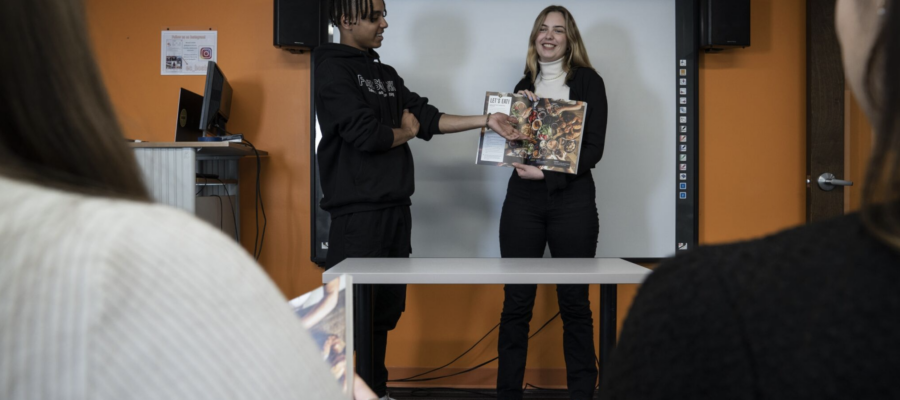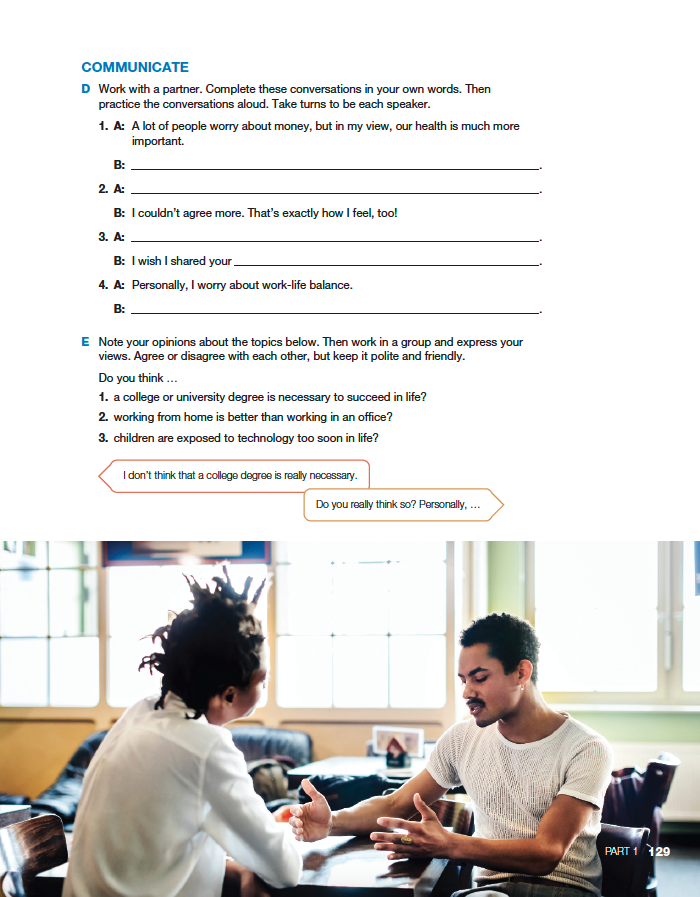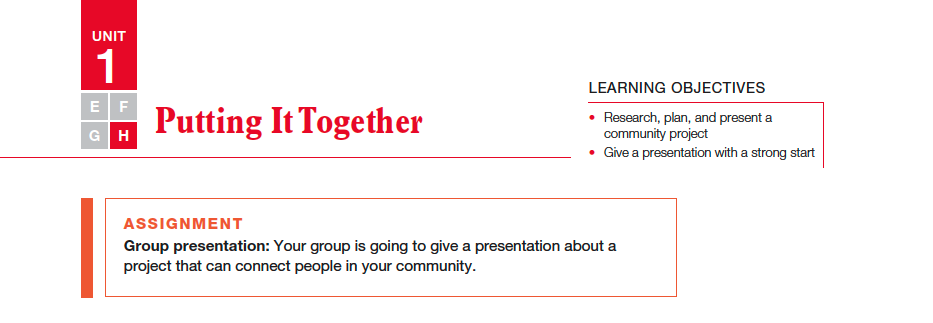The ability to communicate clearly and collaborate with others are two of the most important skills for today’s learners. These skills need to be developed through consistent practice, so it’s important to provide plenty of opportunities for learners to speak and work with others in class.
Below are some ideas to help you set up your classroom for collaborative work and facilitate effective student-to-student communication.
Preparing for Collaboration
For collaborative work to happen, students first need to be placed into different groups. While randomly assigning groups may be one way of making sure that students get a chance to work with different people each time, purposeful groupings of students can help maximize learning. Here are two ways to organize groups:
- Place students of similar levels together when you want to devote more time to working with the lower-level students in a class with mixed levels of proficiency.
- Place higher-level students with lower-level students. Tutoring peers reinforces learning for higher-level students, and lower-level students benefit from learning from their peers.
Once students are in their groups, it’s important to tell them what the end requirements are of the group work, so they know the expectations of each exercise. Explain to students that they should not only share their own ideas, but also ask for their classmates’ opinions about the topic. Lastly, assign roles so that everyone participates. For example, the group leader keeps the conversation on track. The recorder takes notes on the discussion. The reporter uses the notes to report back to the whole class. Roles can be rotated within a group.
Facilitating Successful Communication
Students need to be able to provide and respond to critiques respectfully both in class and in the workplace. Here are some suggestions for helping students give and receive feedback on presentations effectively.
Giving Feedback
- Have students ask their classmates how they think they did overall before providing feedback.
- Ask students to use “I” instead of or before “you” to emphasize that they are expressing their opinions. For example, they could say, “I think you could improve your introduction,” instead of, “You could improve your introduction.” In these activities from 21st Century Communication, Second Edition, students practice using “I” statements to share their opinions productively in partner and group conversations.
- Explain the “sandwich” method of providing feedback to students. First, they should express something that their classmate did well. Next, they present an area for improvement. Then, they add another thing that their classmate did well. In this way, the two positive comments “sandwich” the critique in the middle.
- Ask students to always provide examples or reasons for their opinions so that their classmates have a clear idea of why they did well, or not so well, in certain areas.
- Have students support their opinions with specific information in the scoring rubric, if using one. In this example from 21st Century Communication, Second Edition, students develop group presentations on a community project. Another group uses a rubric to help them structure and deliver clear, impactful feedback on the presentation.
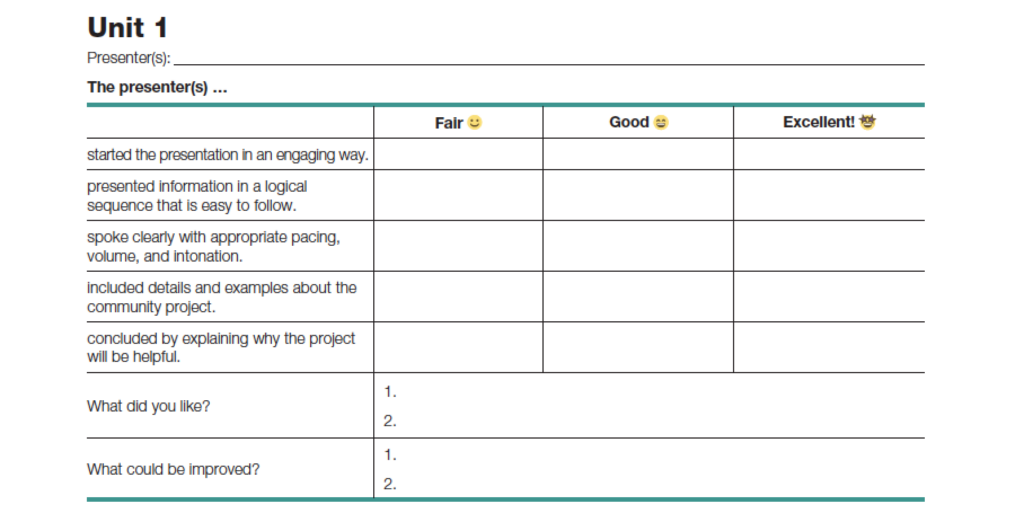
Receiving Feedback
- Explain to students that when they receive feedback, they should listen and not feel the need to respond immediately. They should listen to their classmates’ opinions, ask clarifying questions, and then thank their classmates for their feedback.
- Remind students that they do not need to agree with their classmates’ opinions. Ultimately, they decide what feedback to accept and reject. However, it is not necessary to tell their classmates what they plan to do with the feedback.
- Encourage students to have an open mind. Their classmates will view their presentations from many different perspectives, and the feedback will reflect these various points of view. Feedback may unexpectedly highlight an area of strength or weakness for reasons students may never have considered.
In 21st Century Communication, Second Edition, students have many opportunities to work in pairs or groups. Every unit contains dedicated sections for pair or group discussions, more in-depth collaborative work, as well as a final presentation. These activities from Level 1, Unit 2 encourage students to interpret an infographic and discuss a lecture about sustainable materials in pairs. Students practice giving clear reasons for their opinions and evaluating their partner’s ideas.
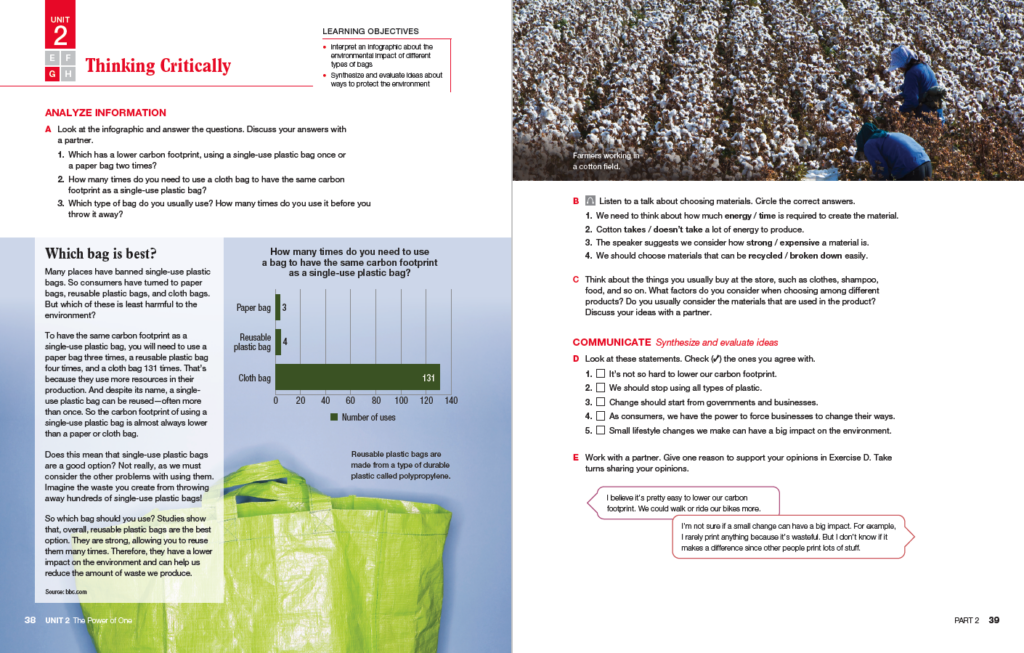
Individual or pair work exercises can be extended into larger group exercises by having students share their work.
To prepare your students to use English in various careers and other real-life contexts, it is important to engage them in English through activities that invite them to collaborate on projects, share their opinions, and provide thoughtful feedback. Starting with the tips above, you can make communication and collaboration in the English classroom both enjoyable and interesting.
Find more tips to help you manage mixed proficiency classes and encourage student participation in 21st Century Communication, Second Edition!


